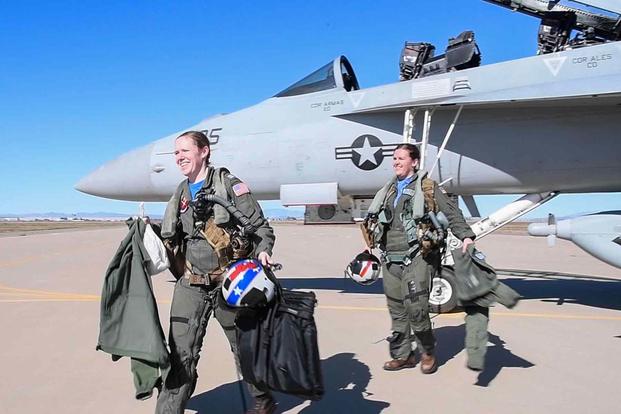SAN DIEGO – Three U.S. Navy tactical aircraft squadrons will conduct an integrated flyover at the conclusion of the National Anthem during Super Bowl LVII at State Farm Stadium in Glendale, Ariz., Feb. 12.
Download the latest press release HERE
The flyover formation will include two F/A-18F Super Hornets from the “Flying Eagles” of Strike Fighter Squadron (VFA) 122, an F-35C Lightning II from the “Argonauts” of VFA-147, and an EA-18G Growler from the “Vikings” of Electronic Attack Squadron (VAQ) 129. These aircraft represent the strike and electronic attack capability of the “Carrier Air Wing of the Future,” providing advanced technology and enhanced flexibility to our military combatant commanders. VFA-122 and VFA-147 are based at Naval Air Station (NAS) Lemoore, Calif.; VAQ-129 is based at NAS Whidbey Island, Wash. The squadrons will stage and depart from nearby Luke Air Force Base.
The flyover also commemorates 50 years of women flying in the U.S. Navy. In 1973 the first eight women began flight school in Pensacola, Fla., and one year later six of those eight women, titled “The First Six,” earned their Wings of Gold. Since then, women have served, operated and led at every level of Naval Aviation.
Lt. Katie Martinez, a Naval Flight Officer assigned to VFA-122, looks forward to representing Naval Aviation at one of the world’s most-watched events.
“It’s not a feeling I can even put into words,” said Martinez. “It doesn’t get bigger than the Super Bowl, and I am humbled and honored to be able to participate with my friends and fellow Naval Aviators as part of this once-in-a-lifetime opportunity.”
The fifth-generation strike fighter F-35C Lightning II integrates advanced stealth technology into a highly agile, supersonic aircraft that provides unprecedented battlespace awareness, versatility and survivability. The F-35C, which is the Navy variant of the F-35 Joint Strike Fighter, sets new standards in weapon system integration, maintainability, combat radius and payload that bring formidable multimission power projection capability from the sea.
Entering fleet service in 1999, The F/A-18 Super Hornet, has earned a reputation as the backbone of the Navy’s carrier air wing and a workhorse within the fleet, continuing its key strike fighter role against the advanced threats of the 21st century. Designed to meet current Navy fighter escort and interdiction mission requirements, the Super Hornet maintains fleet air defense and close air support roles, as well as an increasing range of missions, including in-air refueling.
The EA-18G Growler is a variant in the F/A-18 family of aircraft that combines the proven Super Hornet platform with a sophisticated electronic warfare suite that performs a variety of functions including communications jamming and countermeasures.
Commander, Naval Air Forces (CNAF) is the type commander for Naval Aviation that oversees the Navy’s aircraft wings, squadrons, aircraft carriers, support facilities and training commands. Based at Naval Air Station North Island, Calif., CNAF is responsible for manning, training and equipping deployable, combat-ready Naval Aviation forces to compete and win in any environment.
Re-Posted from Commander, Naval Air Forces, Public Affairs

